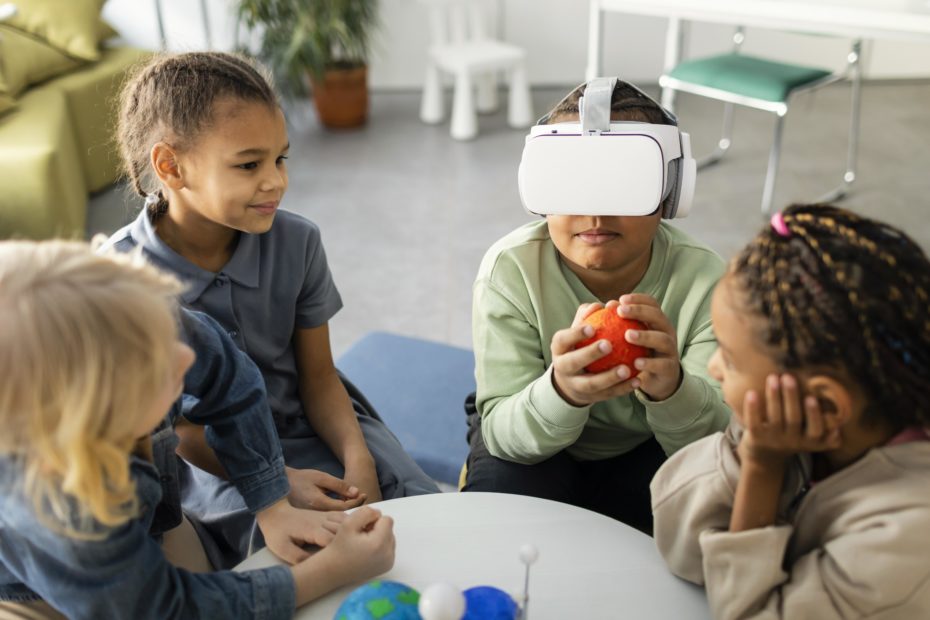Simulation Games
Children learn best when they are playing, and role-playing as someone older, such as a parent, a teacher, or other adult characters helps them to make sense of the world. Simulations provide a playing field to deal with new situations, practice different outcomes, and learn new skills in a safe environment.
Simulation games are an approximation of reality or rather a simplified representation of it. In other words, it is an experience that is based on reality, but does not show it as it is with its complexity.
While some simulation games can teach your child different skills, from managing a budget to flying an aircraft, almost all of them enable your child to practice decision making, strategic and tactical thinking – while having epic amounts of fun!
This type of game offers children the opportunity to learn to recognize different situations and develop in them. Mostly, the situations are inspired by real-life actions, whose resolution is presented in phases and is therefore organized.
Some characteristics of simulation games
BUDGET MANAGEMENT
Your child will have to send their characters to work and learn how to make a budget in order to pay for their current expenses and save for big purchases – such as a family vacation.
MOTIVATION
Given that the situation is presented in an interesting way, the child makes an effort to understand it and is able to reflect on possible solutions, and therefore, advance to the next level. Finally, when they succeed, the feeling of accomplishment, increases the motivation to continue playing and learning.
DEALING WITH DIFFERENT EMOTIONS AND LIFE SITUATIONS
For example, every event in the Sim’s life triggers their emotions in some way, so during the game, they will have different moods that affect their behavior, what they can or can’t do, their reactions, etc. The way your child will work around those moods and emotions in order to accomplish their Sim’s goals will also teach them a lot about how to handle real-life emotional experiences and how to treat others with empathy and compassion.
MAKING DECISIONS
Simulation games help develop good decision-making skills as they force you to take into account different factors to get the most out of them. They offer several opportunities and children must choose only one. This is certainly very beneficial in terms of self-confidence.
TIME MANAGEMENT
Many simulation games have a time limit per level or per activity, so children have to learn to manage their time in order to achieve their objectives and make progress. This is certainly always very exciting for them, as well as allowing them to develop mental agility.
Virtual Reality (VR)
Virtual reality is one of the latest sensations among kids and adults: at parties, gaming events, technology shops, and even in some homes, it has dazzled even the most skeptical.
What does it consist of? Virtual reality is an artificial environment created through software that makes it seem real. When we put on the glasses, we enter a fictional 3D world that becomes our reality and it feels like we’re really there.
How does it work?
What makes us feel immersed in a virtual environment are the contents and images generated by a computer, which are made to simulate a real presence through the senses – sight, hearing, and touch. As such, there are several senses that contribute to the simulation of this virtual reality, and not all devices support the same characteristics.
On a computer, for example, it is only sound and image that provide the sensation of a built environment.
With more advanced technologies, such as virtual reality kits with glasses and controllers, there is also a sense of space and sometimes the rules of physics. We can walk, dance and interact with environments, as well as touch things and see our fingers moving!
This kind of technology has lots of useful applications. Apart from entertainment, through games of all kinds that get everyone moving, its usefulness can be seen in areas such as sports, combating motor difficulties, or medicine, where surgeons can train procedures in a simulation of reality.
The Benefits of Virtual Reality in a Child’s Development
INCREASE ACADEMIC PERFORMANCE AND UNDERSTANDING
A study done on the effectiveness of augmented reality apps in teaching the alphabet to kindergarten children revealed that students who were taught with AR had significantly better results than students who were taught using traditional teaching methods — a mean score of 27.57 in the experimental group and 15.43 in the control group.
ENHANCE MOTIVATION
As your child is engaged in the game, it will motivate them to want to play. Many VR games require full participation. If your child doesn’t move, the avatar doesn’t move — nothing happens in the game. Children learn best when they figure out concepts at their level, and they can do so through VR/AR games. The use of VR technology can enhance traditional teaching methodologies as children are able to apply what they have learned in reality
FUN LEARNING
Children generally have a shorter attention span. Many young children today are exposed to technology and digital screens at an early age. You’ll probably find that it is easier to catch their attention when there are moving pictures/objects. VR allows for immediate engagement which means fewer distractions. You can change the visual settings of the game to cater to each student’s visual engagement. The scenery is usually vivid and attractive; it will engage your child and pique their attention.





